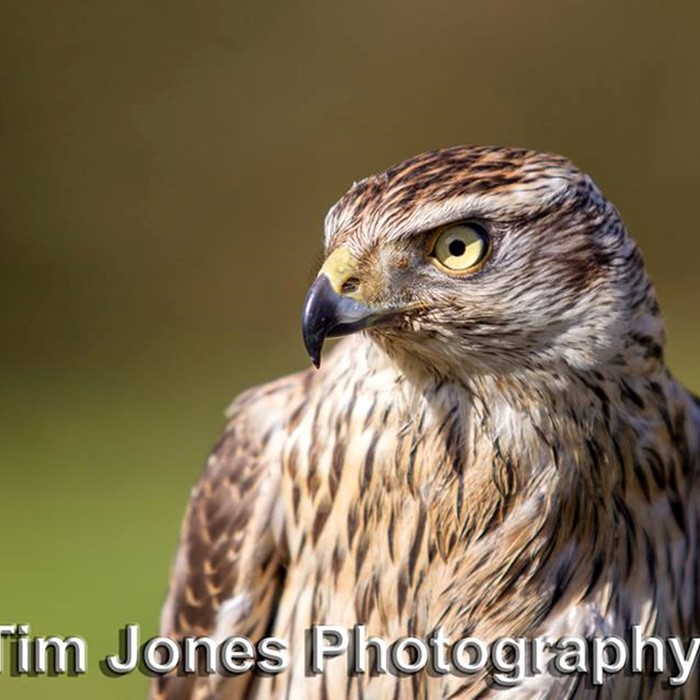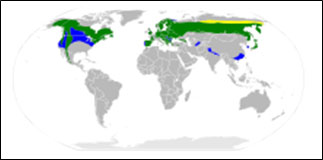
Goshawk
"Nyyrikki"
Nyyrikki is our juvenile goshawk. Although he is an imprint he is still crazy, but that is part of the charm of this type of hawk. 'Ryyk' has been trained to catch a lure, so that we can demonstrate in our displays just how this bird would hunt.
GOSHAWK FACTS
Accipiter gentilis
TERRITORY/LOCATION
Goshawks are widely distributed throughout the northern hemisphere, in Europe, Russia, North America & Canada. They are strictly woodland birds. Once primarily living in deciduous forests, they are now adapting to the extensive man-made conifer plantations, where game-breeding is rare. The population both in the UK & the US appears to be on the decline. In the US they are classified as a "Species Of Federal Concern".
HABITAT
Goshawks are birds of wild forests and tend to occur in large tracts. Across much of their range they live mainly in coniferous forests, but they may occur in deciduous hardwood forest as well.
CONSERVATION STATUS
Least Concern

DIET
Goshawks flash through forests chasing bird and mammal prey, pouncing silently or crashing feet first through brush to grab quarry. Goshawks eat a wider range of prey than other accipiter's, including birds, mammals, and reptiles, as well as insects and occasionally carrion.
SIZE/WEIGHT
Length 53–64cm, wingspan 135-165cm, weighing 620-2050g
NESTING
Goshawks nest in mature and old-growth forests with more than 60% closed canopy. Goshawks often build nests near breaks in the canopy, such as a forest trail, jeep road, or opening created by a downed tree, and prefer sites with a creek, pond, or lake nearby. Clutch size 2-5 eggs.
LIFE EXPECTANCY
10 years in the wild
18 years oldest recorded in the wild
SCIENTIFIC
CLASSIFICATION
KINGDOM
Animalia
PHYLUM
Chordata
CLASS
Aves
ORDER
Accipitriformes
FAMILY
Accipitridae
GENUS
Accipiter
SPECIES
A. gentilis
DID YOU KNOW?
Goshawks are widespread but uncommon, and their secretive nature makes it hard to estimate population trends.
